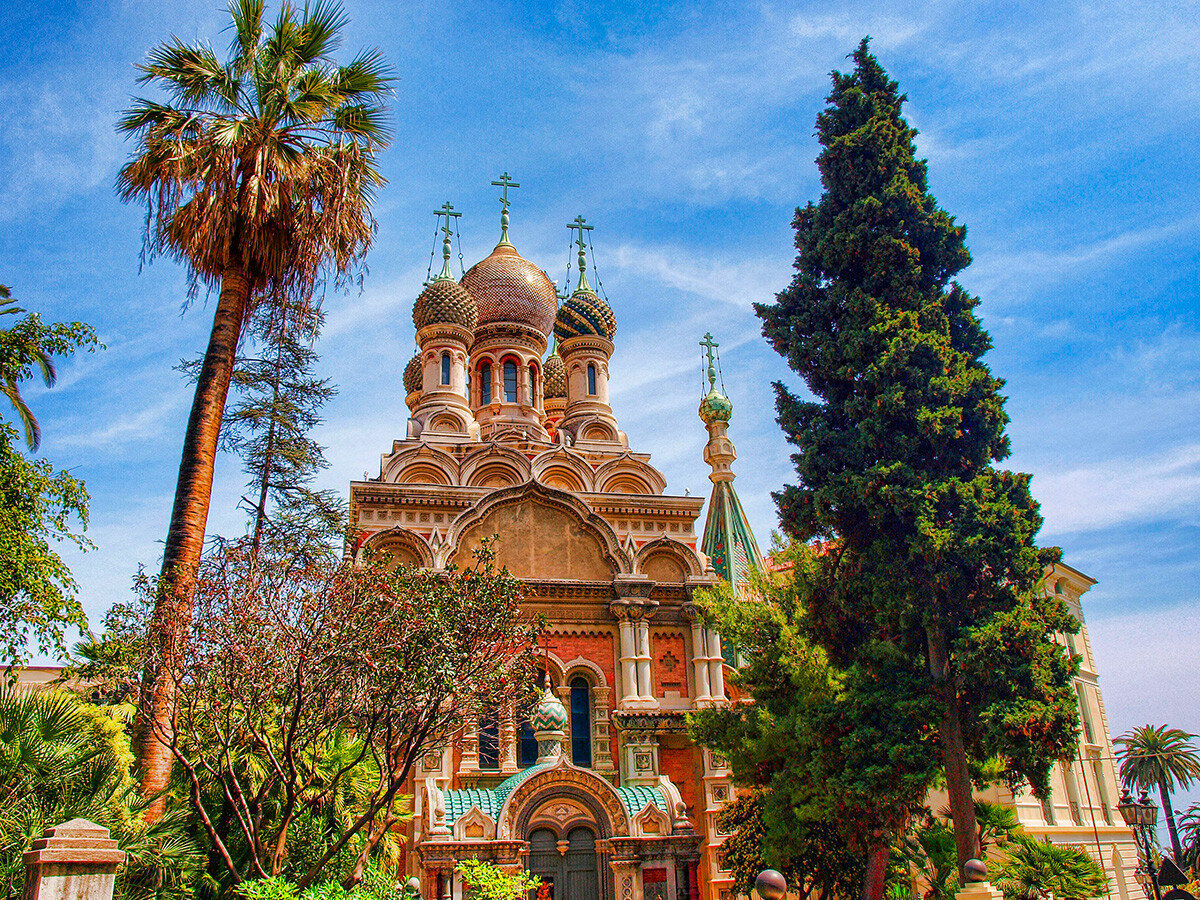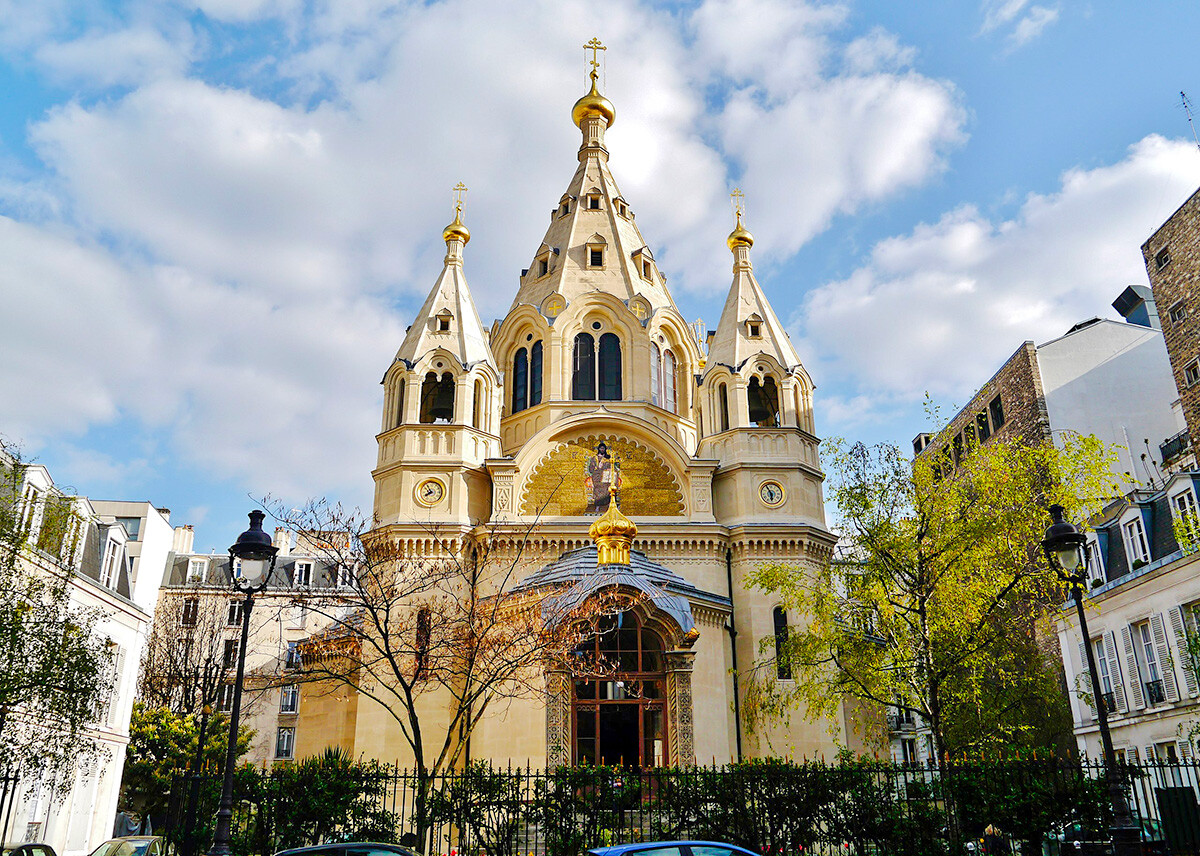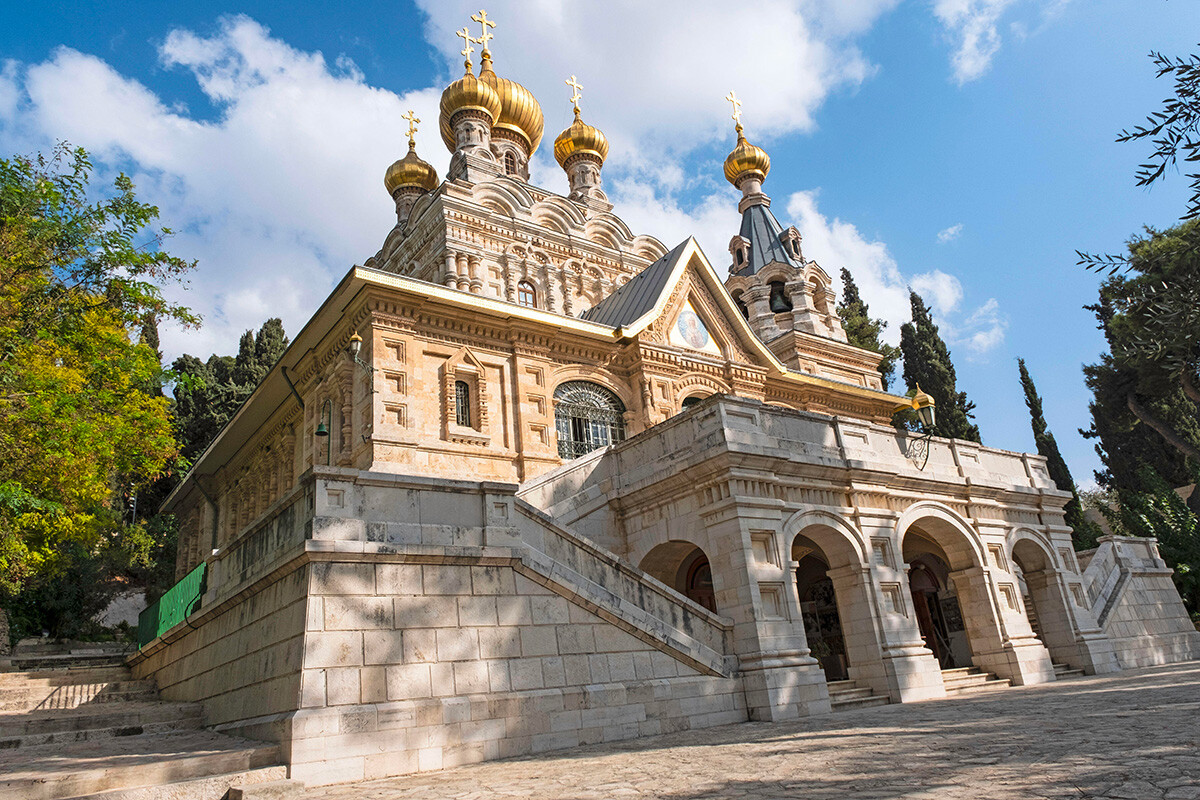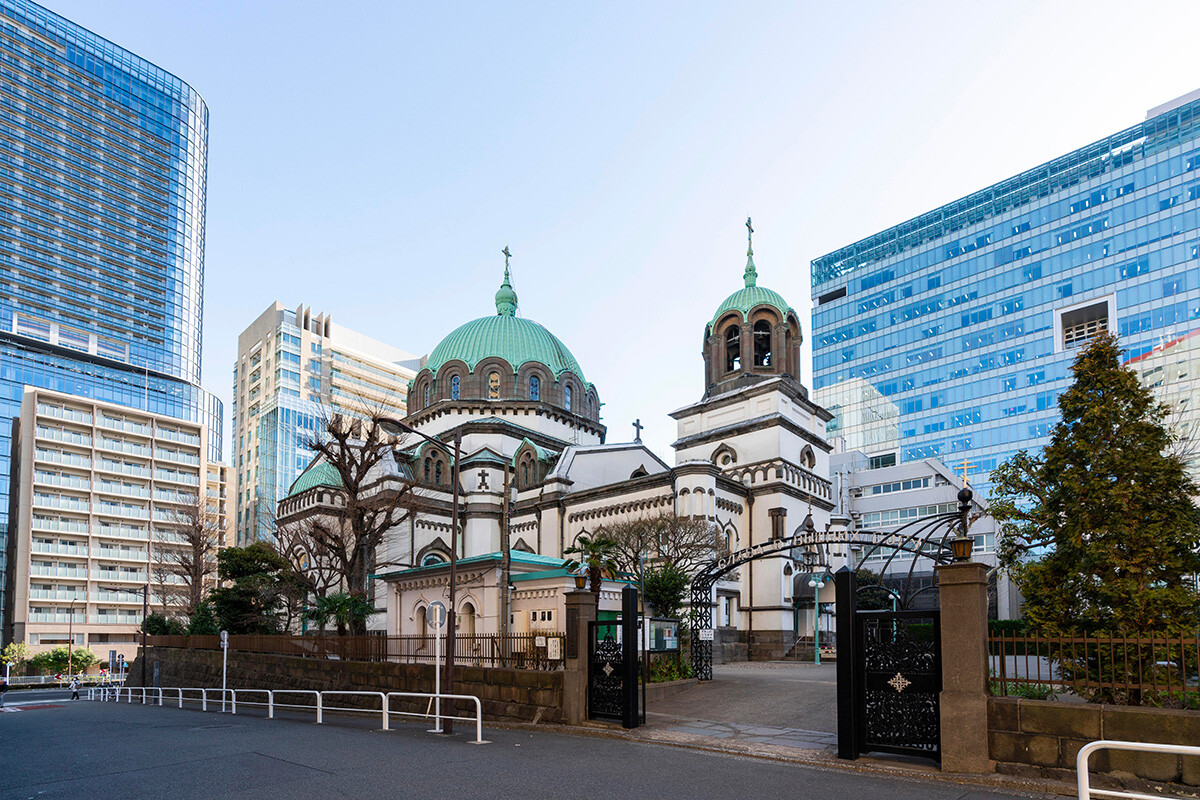
Russian Orthodox churches were built in different parts of the world at different times and for different reasons. Before the Russian Revolution, these churches were built in European countries for the Russian communities that lived there. It was customary among wealthy Russians to travel to Europe for medical treatment or just to unwind; however, often famous Russian writers, artists and composers also went there. At the same time, Russian Orthodox churches were built in countries outside the western world on the initiative of missions that went there to promote Christianity. As such, for example, a Russian church in Japan was built. After the revolution, a lot of believers emigrated from Russia, fleeing the communist regime. These people also required churches, which were built with the money raised by the parish or they were simply bought out from local churches.
The church was built in honor of the late Grand Duchess Elizabeth Mikhailovna from House Romanov. She married Adolf, Duke of Nassau, and they settled in Wiesbaden. A year after their marriage, Elizabeth died during childbirth and her husband built a church over her grave. Today, the church has the largest Orthodox cemetery in Europe.
In the 19th century, Wiesbaden was a popular holiday destination for the Russian aristocracy, so the church had a sizable parish. Emperor Nicholas II with his wife Alexandra Feodorovna also visited the church during their journeys. After the 1917 Bolshevik Revolution, the number of parishioners grew because of emigrants. The church continues to operate today and even a Sunday school named after Dostoevsky was opened there.

Russian communities didn’t always have the opportunity to build their own church – in such cases, the parish rented or bought out buildings from other confessions. That’s why some of the Orthodox churches are located in atypical buildings for Russian architecture. That was also the case with the Church of St. John of Kronstadt in Hamburg. The building was erected by the Lutheran community at the beginning of the 20th century, but, slowly, the number of parishioners reduced to such low numbers that the community could no longer support the church anymore. In 2004, it was sold to the Orthodox community. The Evangelical Church in Germany cut the Russian community some slack – the latter only paid for the land on which the church stood; the building itself was transferred for a symbolic one Euro.
In 2005, the church was consecrated on the day of memory of Saint John of Kronstadt.

Russian aristocracy began visiting San Remo in the middle of the 19th century – doctors recommended the resort to treat lung diseases. There is also a theory that the idea to create a Russian church in the city was first proposed by Empress Maria Alexandrovna, wife of Alexander II.
But, this plan came to fruition much later, under Nicholas II. In 1913, divine services had already started in the unfinished church.

The preparations for the construction of the church began in 1900; the first stone was laid in 1903. Empress Maria Feodorovna, the wife of Alexander III, became the patron of the construction. Initially, she was engaged to the brother of her husband, Tsesarevich Nicholas. But, the latter suddenly died due to illness, spending his last days in Nice.
The cathedral itself was built only in 1912 with Emperor Nicholas II’s own money.

In the 19th century, about 1,000 Russians permanently or temporarily lived in Paris. However, the small Orthodox church at the Russian embassy couldn’t accommodate everyone. So, Joseph Vasiliev, an embassy priest, initiated the construction of a new church and personally took the reins in raising the funds for it. Not just Orthodox Christians, but also Catholics and Protestants took part in this fundraising, with Roman Kuzmin and Ivan Strohm becoming the architects of the church.
France was the center of attraction for Russian emigration after the 1917 Bolshevik Revolution, so last rites for many famous personalities were conducted in the cathedral: writer Ivan Turgenev, entrepreneur Sergei Diaghilev, singer Feodor Chaliapin, artist Wassily Kandinsky, as well as many others.

The beloved daughter of Count Pyotr Shuvalov died during childbirth in the canton of Vaud in 1872. The count really wanted her to find her last rest in Orthodox Christian soil, at an Orthodox Christian church. So, in 1878, he built the St. Barbara Church (his daughter bore the name of this saint).
To this day the church regularly conducts divine services. Despite extensive restoration, some interior details still require some work, so the church is actively looking for sources of funding.

The idea of the church construction belonged to Antonin Kapustin, head of the Russian mission on the Holy Land. In 1881, when Grand Dukes Sergei Alexandrovich and Paul Alexandrovich came as pilgrims to the Holy Land, Antonin told them about his idea. In 1882, Russia had already obtained the documents on the ownership of land on the slope of the Mount of Olives.
In 1888, the construction was finished. The church was maintained with the funds of the imperial family and with donations; today, the church is administered by the Russian Orthodox Church and the Russian Orthodox Church abroad.

The laying of the foundation of the church happened on the initiative of Privy Councilor Alexander Provorov in 1896. He became one of the main sponsors, along with some Russian merchants and industrialists. After three years of construction, the church was consecrated.
Its small building is designed for only 60 people. Its oaken single-stage iconostasis was specially brought from St. Petersburg.

At the end of the 19th century, a wide Orthodox Christian community emerged in New York. Then, a decision was made to build a church that would accommodate up to 900 people. In 1900, the chairman of the construction committee of the church came to Russia to seek funds for the construction. He received the first 5,000 rubles from Nicholas II and 500 rubles more from John of Kronstadt. Many Orthodox Christians followed their example; in a short span of time, about 80,000 rubles were raised.
In 1902, the church was consecrated. From 1905 on, it became a cathedral – the spiritual center of Russian Orthodox Christianity in North America.

The oldest Russian Orthodox Church in Africa was built in 1931-1932 at the request of Russian emigrants. Soon, Orthodox Christian churches began to be opened in other Moroccan cities.
The small size of the parish provoked talks about the closure of the church multiple times. But, a new stream of Russian migrants in 1980-2000 saved the church in Rabat; in the 2010s, an expansive restoration of the building was even conducted.

Russian missionary Nicholas of Japan (Kasatkin) was a church rector at the Russian embassy in the Japanese city of Hakodate. During his first years in the new country, he studied the language and culture of Japan; later, he gained such a command over the Japanese language that he translated the Holy Scripture into Japanese. He also became the founder of the spiritual mission in Japan.
The mission was successful and Orthodox Christian churches began to appear in Tokyo. Funds were required for the construction of a cathedral and, in 1880, Nicholas of Japan went to Russia. Preaching in different cities, he raised 130,000 rubles. In 1891, the cathedral was consecrated – the Japanese call it ‘Nikolai-do’.

Dear readers,
Our website and social media accounts are under threat of being restricted or banned, due to the current circumstances. So, to keep up with our latest content, simply do the following:
If using any of Russia Beyond's content, partly or in full, always provide an active hyperlink to the original material.
Subscribe
to our newsletter!
Get the week's best stories straight to your inbox